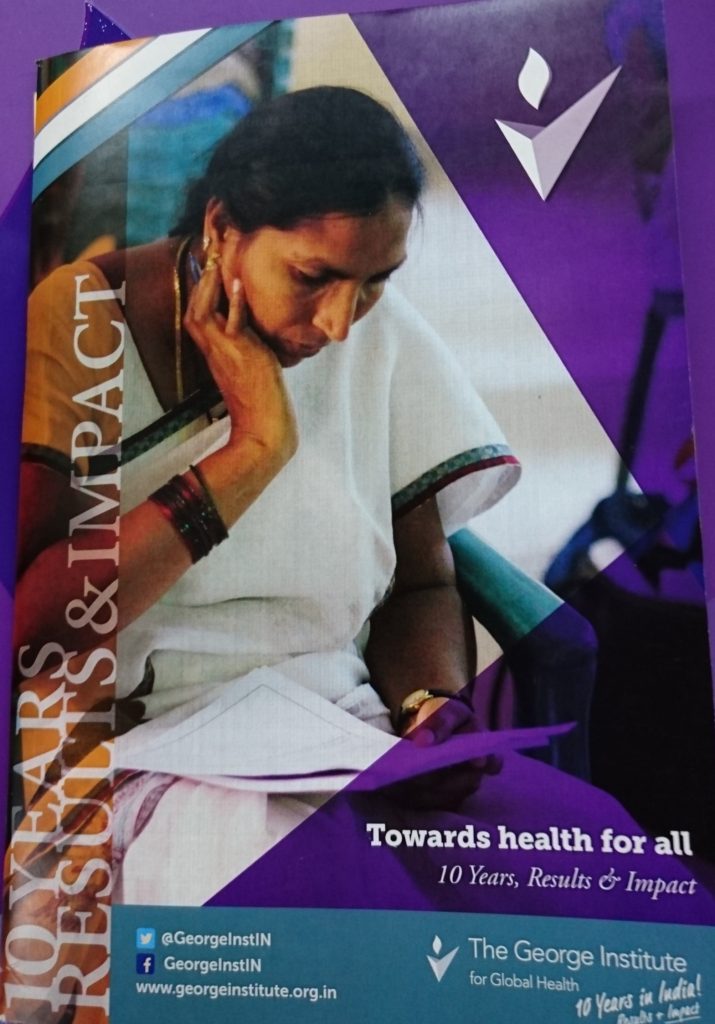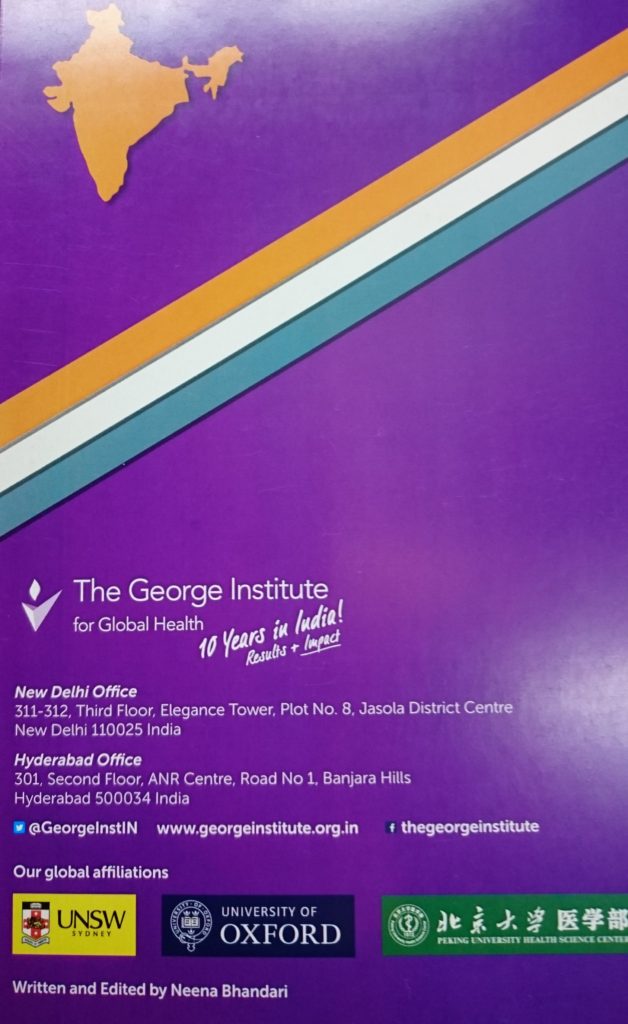By Neena Bhandari
As a young girl, Anushka Patel would travel with her father, a respiratory physician working in the field of tuberculosis, to remote Aboriginal and Torres Strait Islander communities in Far North Queensland. She recalls being shocked to see a part of Australia that was akin to a developing country. It kindled her interest in working with disadvantaged populations and finding effective solutions to providing affordable healthcare.
She seriously began to consider medicine as an attractive career option during her high school years. After completing an undergraduate degree from the University of Queensland in Brisbane, she trained as a cardiologist in Sydney, before heading to Harvard University in Boston [USA] to pursue a Master of Science degree in Epidemiology.
On her return to Sydney, she worked at a clinical trial centre looking at new treatments for people with heart attacks, and testing whether these treatments could reduce the mortality rate in a hospital setting. “As a cardiologist, one sees very sick patients coming into hospital, many of whom will die without intervention. It’s an exciting environment where you can see positive outcomes within a few hours or a few days”, says Prof Patel, who found the work intellectually interesting, but it didn’t satisfy her interests around prevention and interventions that are likely to have a broader population impact.
She was looking for an opportunity to work where cardiovascular disease, chronic diseases and global health intersect. Around the same time, The George Institute was being established in Sydney. “It was a happy coincidence for me as at that time, there were no other Institutes anywhere in the world focused on chronic diseases with a global perspective, including low and middle-income countries. It was very unique so I joined the Institute in 2001 to lead a specific trial in Type 2 diabetes. It involved many countries, including India and China, and I spent a lot of time in both countries”, says Prof Patel, who became the second Director of the Institute in India in 2009.
MYRIAD CHALLENGES: “We started off in Hyderabad (Andhra Pradesh), where we already had a presence. I was supposed to be there for six months until we found a permanent director, but I ended up being in that role for four years until 2013 while also continuing as the Co-Director of the Institute’s Cardiovascular Division in Australia. I spent few months in India every year. It was a small office and I hired our first senior academic staff member. We had few connections with other local institutions government and we had very little funding. So, I focused on building the academic team and establishing a couple of key early partnerships, such as with the Public Health Foundation of India (PHFI)”, says Prof Patel, who had migrated from Uganda to Australia with her parents at the age of six.
She had never before lived or worked in India. However, she did get a chance to explore the country on long road trips with her maternal aunts, uncles and cousins during holidays. As a professional, she found the Indian bureaucracy challenging. “Fortunately, I had a lot of support, especially from a softly spoken former army Colonel, who was our Head of Finance and Operations. He knew how to get things done. There was limited funding for research within India, so the Institute had to collaborate closely with people outside of India, particularly Australia, where the Institute had many senior experienced researchers. Moving things forward without funding was always a challenge and it remains the case even today”, she adds.
THE CARDIOVASCULAR DISEASE EPIDEMIC: Cardiovascular disease is not only the leading cause of death in India, but also premature mortality and disability. “By any measure of health burden, cardiovascular disease is on the top both for men and women and it is not limited to urban areas. It’s not consigned to the rich. The approach to dealing with this real problem has to be at several levels. It has to be at a policy level with things such as tobacco and food policies; at the population level around community awareness; and at the healthcare provision level so we can identify people at high risk and deliver the effective treatments that we have at our disposal”, says Prof Patel, who is currently working on a trial looking at lifestyle intervention to prevent future chronic diseases in women with gestational diabetes.
EFFECTIVE SOLUTIONS FOR AFFORDABLE HEALTHCARE: She started the global SMART [Systematic Medical Appraisal, Referral and Treatment] health research program. It is a health system intervention, which uses a digital platform to support non-physician healthcare workers and doctors provide the best evidence-based care for common chronic disease prevention.
“It’s using both task sharing as well as decision support. We did the first trial in Australia and we have a number of studies in rural India. We are now extending that to Indonesia and China. It’s an example of our transnational work, which is the new definition of global health. It’s tackling problems that are maybe as relevant in Australia as they are in, say, India, but obviously they have to be adapted for the local context”, says Prof Patel, who is currently the Chief Scientist at The George Institute for Global Health, Professor of Medicine at University of New South Wales and a Cardiologist at Royal Prince Alfred Hospital in Sydney.
“We believe that cardiovascular disease is eminently preventable through population measures to support behaviour modification, as well as identifying people at higher risk early and using medications to manage that risk. However, very few people at higher risk actually receive treatment. One of the reasons is that often one requires multiple drugs for optimal prevention, which can be complex and expensive. So, we theorise that a single pill containing multiple medications could improve both the prescription and the use of these medicines. This led to our program around cardiovascular “polypills” or “fixed-dose” combination medications. Our trials in India, Australia, and a number of other countries have shown this to be an effective strategy. We are looking at ways to scale that up now”, she adds.
MAKING A DIFFERENCE: She feels the Institute in India has come a long way in the past decade. “The Institute today is much more recognised in our area of work amongst central and state government circles, relevant NGOs and local offices of multilateral agencies, such as the World Health Organisation. We are now an organisation that people come to looking for partnerships, which is a major achievement for an Institution. I think having our current senior, experienced director, who’s very well-respected and well-connected has been critical”.
The big challenges include lack of local funding, finding experienced researchers, and providing younger researchers the opportunities to receive high quality training in public health and health systems research to advance their careers.
THE WAY AHEAD: In India, the main challenge will be translating the enormous amount of evidence the Institute has generated around effective treatments, prevention and management of chronic diseases into positive outcomes. “There are multiple examples of where our clinical research has changed guidelines, but how does one get these treatments to those who most need them and can least afford it? I think remaining single-minded about that challenge and investing our resources, both human and financial, into a very strategic approach to not just doing the research and publishing it, but developing pathways to impact is really the future of the Institute globally, not just in India”, emphasises Prof Patel.
She outlines three roles for the Institute. The first and foremost is to continue to develop effective solutions, and that has to happen in partnership. The research has to provide evidence that the solution is effective, it can be scaled up and it is affordable. She says, “We have to find out under what circumstances do they work? What unintended consequences there might be by introducing something new into the system? This type of research is called `implementation science’ and it’s become a major focus of the Institute globally and that’s probably the predominant focus of what we do in India.
“Secondly, the Institute’s role beyond a typical academic organisation. It is conducting the highest quality research and publishing that in the highest impact journals, but is also ensuring that the Institute is engaged with vision makers and implementers to scale up its innovations. This vision of scale-up is being pursued with governments, NGOs and, where relevant, with commercial partners.
“Thirdly, the Institute’s role in capacity building. “In all the countries we work in, including India, Australia and China, we need to continue to train the next generation of researchers and advocates for prevention and management of chronic diseases”, she adds.
Note: This interview is part of the 10th anniversary of The George Institute for Global Health in India booklet.
© Copyright Neena Bhandari. All rights reserved. Republication, copying or using information or photographs from neenabhandari.com content is expressly prohibited without the permission of the writer and the media outlet syndicating or publishing the article.



